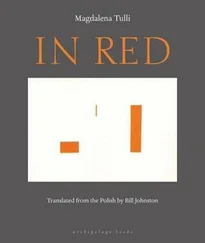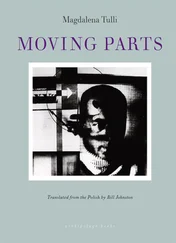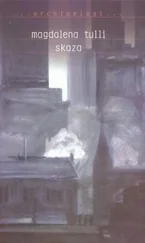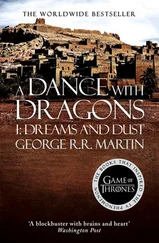The builders had the privilege of certainty. They knew truths that were not subject to doubt. But they kept them to themselves. Where now can one find the certainty that the world is a machine since in so many respects it resembles a tree? Like the tree with its countertree, so each object in the world is linked to its counterobject and all that is visible is connected with something invisible. Between the visible and the invisible parts of the tree there is a perpetual flow of juices from the roots to the leaves. As they turn yellow and fall off, the leaves quit the heights of boughs and return where their substance came from — the roots. They become dark and damp like the roots, they mingle with earth and water and when invisible they are drawn within them. Despite the life-giving flow of juices the separation of the tree from the countertree is technically feasible. The builders cut down trees successfully. Though here it should be noted that during this operation life slips away from both parts. The same happens with anything else: After the visible part is separated from the invisible part everything withers and shrivels up. Not everything, say some, and they also know a thing or two. But what survives will turn out to be part of a theatrical set or a dream.
It is hard to work when it is unclear which truth should be adhered to. When we think of the world as a tree we see a tree, when we think of it as a machine it is a machine. In both cases observations corroborate one’s assumptions, in both cases everything falls into place. Things are not provided with any telltale sign; there is no maxim to which one can appeal. Anyone who says, “it is a tree,” will immediately think of a machine; whoever says, “it is a machine,” will think at once of a tree. For this reason the expressions “it is a tree” and “it is not a tree” in essence mean the same thing. Would it not be better if the creators of the project were right? They treated the world as if it were a machine and were prepared at any moment to remove and repair whatever needed it. And thanks to the certainty that was their lot, separating objects from counterobjects turned out to be childishly simple. For a machine contains nothing that can be destroyed during the act of separation. It is inanimate by assumption and from the beginning and no one expects things to be otherwise. After the casing is removed the parts can be seen. There is no secret here, nothing elusive, nothing that cannot be touched. Even the rules governing the breakdown of parts are utterly plain. It is clear that they are associated with dust and water vapor finding their way into the mechanism. If the world is a machine then the separation of object from counterobject must begin with the sealing up of the casing. And from the construction of a vault that will rest on solid ground. By this means the upper and lower waters will be parted and from that moment it will be obvious what is the top and what is the bottom, what is order and permanence and what is chaos and change. And only then will it be possible to distinguish night from day.
A properly sealed casing will protect the world from dust and vapor coming from the outside. However, the solving of one problem opens the door to further complications. Cooling apparatuses need to be installed to prevent the mechanism from overheating. The more auxiliary devices there are the more dust and vapor there is on the inside, released by friction and by differences in temperature. The final separation of movement from friction, warmth from cold and good from evil requires only an installation to remove vapor, dust and dirt beyond the dome of the sky directly into the churning waters that swirl on the other side of the vault. Thus the difficulty of separating the city from the countercity comes down to powering all the essential devices. In accordance with the conception of the project’s creators a safe dry space beneath the vault requires effective seals and large power stations.
The city spread out on the draftsman’s blueprint had something festive about it. It had been designed with the thought of sunny days and no one even knew what it would look like in rainy weather. The sidewalks with their evenly laid-out flags recalled squared paper or the other way round: The square-patterned paper copied the stones of the sidewalk. There was no space for kitchen refuse lying about near trash cans. On one of the streets there was a kindergarten, on another bricklayers walked along in pants stained with lime while on a third a band played with gleaming trumpets. Care was taken that the sun should shine both on the bricklayers and on the kindergarten although — it goes without saying — it shone most handsomely of all on the trumpets.
All this could also be seen in the photographs appearing in the daily press. There bricklayers with their caps pulled down over their brows saw the deliberation of a bricklayer over a game of drafts on Saturday after work, the confidence of a bricklayer writing a compound fraction on the blackboard at night school, the pride of a bricklayer showing a new building to a trim-looking nurse. For newspapers were among the first things that appeared in the world, even, it seemed, before the creation of printing presses.
The news photos came into contact with our world through the surface of the paper yet they had their own depth in which pasteboard suitcases, kept under bunk beds in twenty-person dormitories, were filled not with loops of sausage and not with fustian long johns but with books about the lives of bricklayers. For in that world what could be more interesting for a bricklayer than the life of a bricklayer, the work of a bricklayer, the thoughts of a bricklayer? The same applied to turners, foundrymen, fitters, and all the other people who lived happily in the other world beneath the surface of the paper.
The original plan of the city consisted of a drawing of many symmetrically arranged square shapes linked harmoniously to a great central rosette. It should be stated that the acoustics were excellent. A garland of megaphones arrayed around the base of the central building sufficed to bring sound to every street. The palace erected in the center of the rosette was filled with marble and mirrors. From ceilings so high they were scarcely visible and seemed always to be shrouded in mist there hung crystal chandeliers outspread like fountains. Of the ten thousand double doors at least half were locked from the very beginning since they were needed not for access but for symmetry. As the latter concept so closely expressed the notion of the mechanical equilibrium of the world, it was elevated to the status of guiding principle in the project. In the meantime the keys to the doors had been mixed up and lost from the start. Every bricklayer, machinist or foundryman who entered the interior would doff his herringbone cap and twist it in his hands, gazing about in admiration at the walls and ceilings, and would retire at once to the exit, having glanced by accident into a mirror in its gilt frame.
The mirrors were little smaller than the walls on which they hung, one opposite another, duplicating their reflections into infinity. Kilometers of tiled floors retreated into the distance of mirrored spaces, into the boundless world that is separated from ours by the surface of the glass. An endless number of cleaning women had to work without a break in all the mirrors, polishing the floors from morning till evening all through the month; before they finished their work, it was time to start over again.
From the ground level, elevators shot up like speeding bullets to the highest floor; they were operated by female attendants with silver buttons who sat on gold-colored stools. From the dizzy heights the tramcars below looked like matchboxes and the people like ants, while dogs and pigeons could not be seen at all. That world, in which everything was so small, bordered on the highest floors through the panes of windows that were always closed, and it was only from there that it was visible. It was not easy to reach the miniature square that the miniature tramcar was passing. One first had to break the window, lean outside, hear the whistle of the wind and ask for the last time if this was truly what one desired. For in that world, where everything was small, all one could do was die.
Читать дальше












